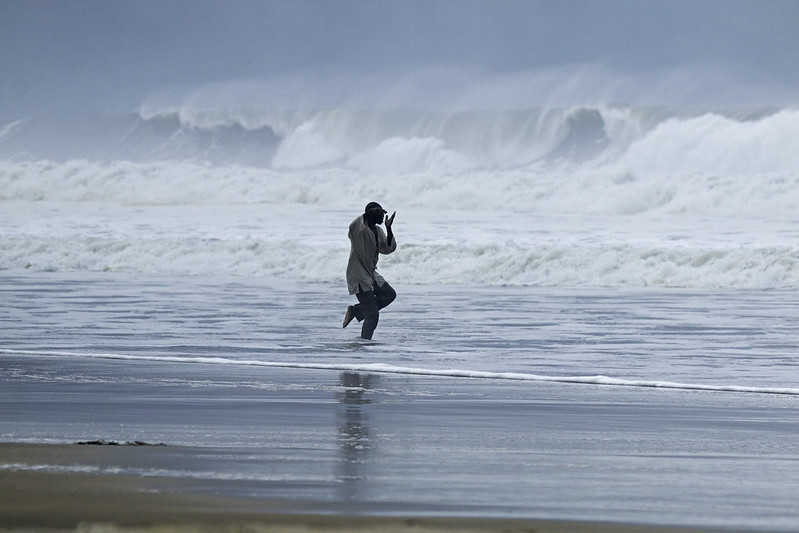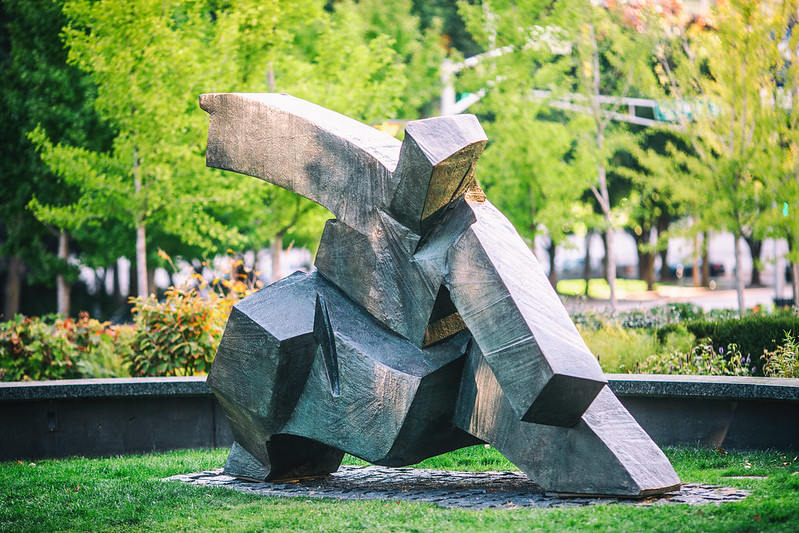
SHAPING IS BUILT ON ACCEPTANCE
Okay. Almost everybody agrees: we humans can shape our own worlds. All we have to do is make the choices that help us get to our own bright and happy place.
Making choices, deciding where and how we want to go, is our best and brightest super-power, it says here.
So, why does it keep going glongy? Every time we use this supposed super-power of ours, why is it that the options we choose rarely transport us over the threshold of the gate into the world in which we want to live?
The life-hack mavens, one and all, say some of it is circumstance and some of it is all these other guys tripping all over your feet. They say there isn’t too much you can do about life- or world-events. What other people do is also not something you control.
There is one bright spot, however. Mixed in with all that stuff you cannot control are the ones that you can. You just need to be able to pick out your most effective moves from all the rest.

SHAPING IS REALLY A MARTIAL ART
The actions that allow you to step back from a situation for a sharper look at what is happening work better when they are part of an automatic response. Sometimes the hammer comes down on you swiftly or you get blindsided by a totally unanticipated something that just blows up in your face.

Like a martial artist you can develop ways that allow you to accurately assess an oncoming threat and immediately pick out and make the appropriate responses that will keep you intact as you move forward towards your own goals.
You can train yourself to get very good at this.
The swiftness (and the accuracy) of the response systems you develop will allow you the mental space to pick out and execute the most effective moves you can make that will further your own agendas.
The 2017 YouTube video below gives a taste of the philosophy and sensibility that allows a serious martial artist to engage effectively with the world both physically and with his or her mind.
The video features Sensei Todd Ryotoshi Norcross of the Dojo Martial Arts in Mason, Ohio, about 25 miles northeast of Cincinnati. The Dojo calls itself a Samurai/Ninja school.
In the video Norcross talks a little bit about the three mindsets a warrior needs to develop in order to deal effectively with conflicts: Isshin, “one-mind, one-heart”; Mushin, “no-mind”; and Zanshin, “alert mind”.
According to Norcross, the three mindsets are ways you deal with any situation you encounter in the world. (Since the guy is a warrior, he tends to see differences of purposes and opinions as possible arenas for confrontation and conflict.)
Isshin, he says, is about connection and interdependence and is appropriate as your ground-zero mindset. With it you can deal with the regular day-to-day stuff.
If some problem develops between two people, Mushin is a way to cultivate the ability to assess what actions by you are needed to resolve a situation and to take those actions.
Zanshin is about remaining alert and paying attention after you have taken some action or other, noticing the effects and aftermaths of the action you’ve made.
A great deal of the mental training in the martial arts, Norcross says, is a reaching towards perfecting the Mushin or “no-mind” mindset, which is built on the ability to stay absolutely focused in the present moment and to see what is actually happening and what is unfolding as it progresses.

The past inevitably calls up thoughts about old lessons — historic judgment-calls, old rules of thumb and the results of previous actions. Thoughts about future possibilities can engender worry, anxiety and misgivings.
If your head is stuck in the past or distracted by the future, you are not going to really be seeing what is right in front of you now. That other stuff gets in the way of clarity.
As some wise guy or other once said, “NOW is the moment of power.” In warrior-world, that power is expressed physically and in combat so a lot of the rest of the martial arts training is geared for that.

Learning about and developing these mindsets may be a thing a wannabe Shaper might want to pursue. It does help.

RULE OF THUMB NUMBER ONE
The only heuristic you need to keep in mind when you set out to build your own world is this one:
“It doesn’t matter what happens to you. What matters is the way you respond.”
Every wise guy there ever was always says that it really does all come down to controlling your own self. (It is actually the only thing you have any kind of chance of controlling.)
Mostly what you can control is your responses and reactions to the rest of the world. This YouTube video, uploaded by Fearless Soul in 2018 has some handy hacks you might want to explore:
LESSONS FROM A COUPLE OF ELDER MASTERS
For those among us who are not gearing themselves up to be superlative warriors of one sort or another (and even for those who are), another resource to explore is a beautiful book that became an international bestseller when it was published in 2016.
THE BOOK OF JOY: Lasting Happiness in a Changing World features the thoughts of the Tibetan 14th Dalai Lama Tenzin Gyatso and Anglican Archbishop of Cape Town Desmond Mpilo Tutu from South Africa. Writer Douglas Abrams worked with the two men to make the book real.
Abrams has spent his career as an author, editor and literary agent “working with visionaries bent on creating a wiser, healthier and more just world,” the book jacket says. For more than a decade before undertaking this book project, he worked with Archbishop Tutu, among others, as a co-writer and editor of other works.
The book documents a series of loving dialogues between two old friends who also happened to be among the most revered and beloved spiritual leaders on the planet.
For the first (and only) time in their very busy lives, the two were able to spend a week, hanging out and enjoying each other’s company at the Dalai Lama’s home in Dharamsala, India.
Together, with Abrams as their moderator, the monk and the priest spent a part of their days exploring the concepts and beliefs of their own spiritual practices and the life lessons they learned in their own tumultuous lives as they considered the best ways they have found to reach for a joyful life.
Both men were no strangers to Life’s challenges and frustrations. As catalysts and historic change-makers, both men stood before power and spoke their truths.
The men faced hardships and great sorrows and pain in their lives. And both men, throughout their lives, were renowned for their extraordinary joyousness, their empathy, their humility, and their kindness.
They were old men at the time of the visit, which was part of a celebration of the world’s most famous Tibetan monk’s 80th birthday.
The visit almost did not happen. The Archbishop’s pancreatic cancer had come back and it was feared that he would not be able to visit his friend. They did it anyway.
The video below, which features the Dalai Lama, was published by CBS Sunday Morning in 2016. It is a lovely taste of the flavor of the book.
The Archbishop died in 2021 of the disease which had plagued him since 1997. He was 90 years old.
ACCEPTING REALITY IS ONE OF THE PILLARS OF JOY
In the book, the pair of holy men presents what they call the “Eight Pillars of Joy.”
Four of these pillars are “qualities of the mind”:
- perspective
- humility
- humor
- acceptance
The other four are “qualities of the heart”:
- forgiveness
- gratitude
- compassion
- generosity
The dialogues in the book consider each of these pillars, explaining why they are important for engendering happiness and joy and going into some detail about effective ways to work on developing them.
ACCEPTANCE AS THE PLATFORM FOR DANCING WITH CHANGE
As I pondered on these pillars of joy, it struck me that the mind-quality of “acceptance” might well be the foundation for developing the martial artist’s three mindsets for responding to disconnection, confrontation and conflict.
Of all of the qualities the Dalai Lama and Archbishop Tutu explored, acceptance is the one that seems to be most aligned with the martial artist’s focus on staying in the Now.

“We are meant to live in joy. This does not mean that life will be easy or painless. It means that we can turn our faces to the wind and accept that this is the storm we must pass through. We cannot succeed by denying what exists.”
Abrams does a riff on the spiritual perspective of “accepting the inevitable frustrations and hardships as part of the warp and woof of life.”
He summarizes the two holy men’s thoughts on the importance of learning how to figure out how to use the obstacles and challenges we encounter as something that can be used to make a change.
As the Archbishop says in the book, “The acceptance of reality is the only place from which change can happen.”
This is because your acceptance of all of the vulnerability, discomfort, and anxiety of every-day life and the events around you helps you to stay in the present moment where you can make your best responding move using Mushin or one-mind. This kind of acceptance of reality at the beginning of a situation can naturally lead to an almost instantaneous acceptance of whatever happens after you make your responding move.
ACCEPTANCE AS THE PARADOXICAL FOUNDATION OF CONFLICT RESOLUTION

Staying “in the moment” means you will make the move that Isshin (one-mind, one-heart) helps you see by using Mushin (no-mind) to execute the move as well as you can.
Once you’ve made your move, the situation will likely change. Time moves on. The moment you were in becomes another moment, another now. The situation you first faced is either resolved or not.
You pay attention to what happens after you’ve made your move using Zanshin (alert mind) to take a reading of the situation in this new moment, noticing the changes your move has helped to make.
Then, as quickly as you can, you return to an attitude of Isshin (one-mind, one-heart) again in order to see the whole new situation.
If there is a need for another move, then you reach for Mushin (no-mind) and you make your next move.
You can continue through this sequence of mindsets again and again and again until you reach a place where you can be at rest, standing in Isshin (one-mind, one-heart) once again.

Hmmm….

JUST GET UP YOU
I am hiding again.
Like a turtle that has lost its shell,
I am curled up,
Trying to shield my one raw heart
From the sands of uncertainty
Blowing all around me.
It is not working.
So many fears,
So many wants,
So many needs,
So many aching hopes,
And softly dying dreams.
Not all of them are mine.
There they are, all around me.
The demands keep on coming,
Beating at me,
They surround me,
Nagging me and ragging me to
Just get ON with the help-help-helping
That’s become a tiresome chore.
I am turning into rubble,
Getting ground down into grit and dust.
Bolting would feel good, I bet,
Except…
Nothing good ever came of it
Whenever I tried that one.
Running away just took me further
Into empty landscapes
Devoid of any moisture, any juice.
Maybe I could just tune out all that fuss,
All these demands,
All those details…
These whimperings,
Those sobs,
All that pain.
Numbing out would just
Make my day, I bet.
Except…
I’m remembering all of the times
I collapsed in on myself and
Ended up in that
Vast and withering empty
That sucked the life and joy
Right out of me and left me
Drowning in my tears.
That one doesn’t work.
It has never worked.
It probably would not work
This time either.
Okay.
Okay.
Okay.
I got it.
I do get it.
Shoots! We go!
Just get up, you!
Uncurl yourself.
Expose that bleeding heart of yours
To all that you-sand that’s blowing ‘round.
Lift up those arms and
Let those storm winds shake you.
Let the rain beat its rhythms
Right down into your bones.
Listen to the water chuckling down
The riverbed rocks.
Wrap the beauty of this world
Like a blanket all around you.
Feel the blessing of the sun’s warmth
Spreading all over you.
Get up…
Get up…
Get up…
Here is your chance to dance…
Again.
Created by Netta Kanoho
HEADER PHOTO CREDIT: “Acceptance” by Jay from Norway via Flickr [CC BY-NC-ND 2.0]
……
SOME OTHER POSTS TO EXPLORE:
(Click on each of the post titles below and see where it takes you…)
……
Thanks for your visit. I’d appreciate it if you would drop a note or comment below and tell me your thoughts.
12 thoughts on “SHAPING IS BUILT ON ACCEPTANCE”
The no-mind, Mushin, mindset to stay focused on the present in order to see reality as it moves along with an understanding that you cannot control others, only yourself, is an important tool for life. Then you can pick out your next move, which will be taking control of your life and moving forward. It secures your future, by allowing you to control the present.
I hope that makes sense. Your post is very motivational and a good reminder to keep shaping my life. I love this
“It doesn’t matter what happens to you. What matters is the way you respond.” So true!
Got it in one, Jared. Thanks for the visit and for sharing your thoughts.
Please do come again….
Accepting that you are vulnerable and your anxiety helps you stay in the present, stayed in my mind because I deal with anxiety myself and when I am not thinking about the future and I’m focused on my present instead, life gets a little bit easier since I’m allowing myself to live!
Great post:)
Katherine, I’m glad the post resonates with you. Thanks for the visit and for sharing your thoughts.
Please do come again.
What a fascinating read!
My brother and I first took and then taught martial arts in our younger years, spending decades on the discipline and still practicing today.
It was and has been one of the most excellent choices we’ve made in our lives, and the things we’ve learned from it be that mindset, physical fitness, or skill have been life changing.
I also look at the shaping side of your article in other ways, as you’re absolutely right that we do have the choice.
While slightly off topic in a way, I try to help reshape our world by putting solar panels on my roof, actively recycling, and being a part of other green programs, in particular with my coffee consumption.
Thanks for the great article!
You are most welcome, Mark. Thanks for visiting and for sharing your thoughts.
Please do come again.
I’d never heard of Isshin, Mushin, or Zanshin before. I enjoy finding topics that teach me something new as it’s the best way I’ve found to grow in my life. Thank you for that.
I’ve studied mostly Western philosophy and found a connection with Stoicism in that the Stoics believed that “people are affected not by events, but by the view they take on them”.
What are some practical ways to implement the three mindsets in shaping one’s own world and making effective choices?
Thanks for the visit, Matt, and for your question.
The three mindsets explored in the post are tremendously helpful when you are trying to reach a meeting of the minds in any everyday, ordinary business or personal transaction. (You don’t actually have to hit or get hit by other people in order to use them.)
You do need to use your imagination and see yourself and the people with whom you interact in any kind of transaction as partners in a dance where each of you is trying to get to some goal or other that may or may not match what the other person wants to happen.
Analyzing how each of the martial arts mindsets affect the moves you make when doing a transaction and learning to use the moves that work most effectively in the proper sequence are part of the way you can train your mind to choose the best way to behave towards your partner in the art and dance of negotiating and planning and so on.
The goal of the training is to learn how to mindfully choose to make your best move in any given situation…and the only way you get good at doing that (without having to painfully and slowly think through every step of every single move) is to choose to get into lots of different situations and pay attention to where your mind is in the process, do the moves, and then see where the results of your actions take you.
You do the same for any other philosophical principle, I suppose.
The most important takeaway in all of this for me has been that I do understand that being able to memorize the principles of the various mindsets really doesn’t mean much if you don’t use the things and pay attention to how and why they work.
If you get good at utilizing the mindsets, then you go through the sequence/process way faster than it takes to explain it. Once you embody any system (physical or philosophical), the moves and counter-moves become automatic and you don’t feel quite as dorky as you do when you first start the things.
And that’s about all I know about it.
Please do come again.
I agree with Abram’s perspective. The best way to approach our challenges is to see them as stepping stones. That way, you will be able to make the best use of every moment and avoid depression.
The results of depression is always devastating. But when you see them as stepping stones, you are looking at the end from the beginning.
Good thought, Parameter. Thanks for the visit and for commenting.
Please do come again.
Your exploration of the concept that shaping our world is built on acceptance is a thought-provoking perspective on personal growth and empowerment. Your analogy of martial arts principles, particularly the importance of staying in the present moment and accepting reality, in shaping one’s life is both intriguing and practical.
I found myself wondering how individuals who are not familiar with martial arts or spiritual practices might integrate these ideas into their lives more readily. Are there any everyday exercises or habits you’ve come across that can help people develop these qualities of mind and heart?
Furthermore, your mention of “acceptance” as the foundational pillar for joy and conflict resolution resonated deeply. Have you personally found that acceptance has been a transformative force in your life, and if so, what experiences led you to this realization?
Your insights and experiences in these areas would undoubtedly provide valuable guidance for your readers.
Ashley, thanks for your visit. Your questions are large ones and the answers reside in each person who wants to live the questions their own self.
In this blog thing I am engaged in pointing a finger at the stars glittering in the night sky and at rainbows and clouds in the brightness of day and asking people to look up and see what Life-Its-Own-Self is whispering. They get to decide what they want to do with the information.
In this adventure, there really are no Native Guides except the ones that inhabit our own selves. My only “advice” is to look, see, try it for your own self and think on what happens with your heart and your gut as well as with your mind.
Please do come again.